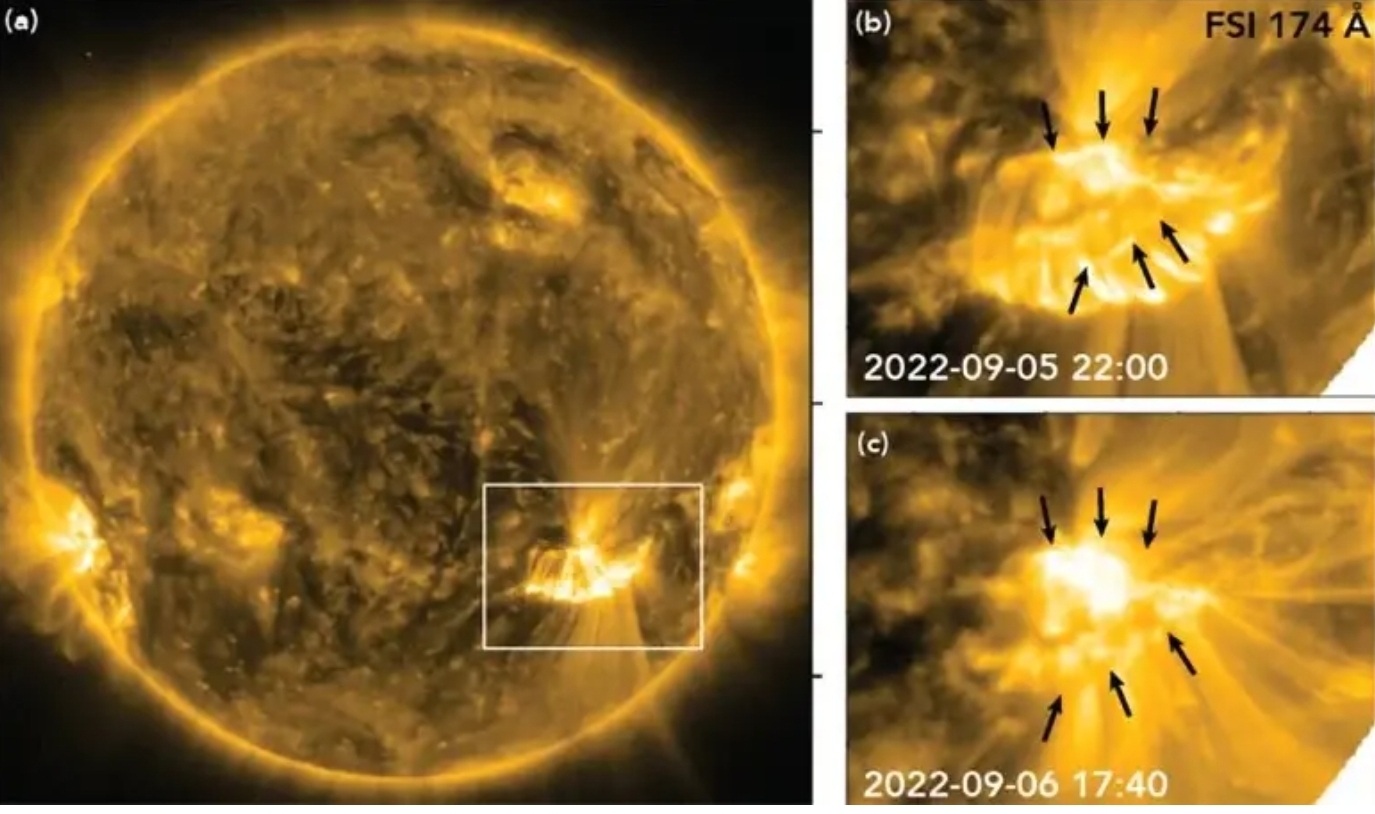
Recently, NASA's Parker Solar Probe achieved a major scientific breakthrough by directly observing magnetic reconnection in the solar atmosphere for the first time, further confirming a 70-year-long theoretical debate in the scientific community. Magnetic reconnection is a process that releases stored magnetic energy, triggering solar flares, coronal mass ejections (CMEs), and other space weather events. This breakthrough is attributed to the Parker Solar Probe, the only spacecraft to have entered the Sun's upper atmosphere. Dr. Ritesh Patel pointed out that magnetic reconnection operates across different spatial and temporal scales, from the Sun to Earth's magnetosphere, and extends to laboratory environments and cosmic scales. Since the late 1990s, researchers have been able to identify magnetic reconnection in the solar corona through imaging and spectroscopy. In situ detection in Earth's magnetosphere has also become possible with the launch of the Magnetospheric Multiscale mission. However, research similar to that of the solar corona only became feasible after the launch of the Parker Solar Probe in 2018.
This breakthrough in the theory of solar magnetic reconnection has no direct negative impacts in itself, but the revealed mechanism of solar energy release poses potential threats to Earth's technological infrastructure and human activities through intensified space weather events, resulting in complex and multifaceted impacts. Firstly, there is the potential for damage to Earth's technological infrastructure. Magnetic reconnection is the core triggering mechanism for solar flares and CMEs. When these solar storms carry high-energy particles that strike Earth, these particles can penetrate satellite casings, causing damage to electronic components or data loss. For example, the 2010 "killer electron storm" rendered a satellite owned by U.S. telecommunications company AT&T inoperative, resulting in direct economic losses of $500 million. Additionally, geomagnetically induced currents triggered by magnetic storms can generate high voltages in long-distance power transmission lines, damaging transformers. The 1989 blackout in Quebec, Canada, caused by a magnetic storm, lasted nine hours, affected six million people, and resulted in economic losses amounting to hundreds of millions of dollars. Furthermore, the X-rays and ultraviolet radiation released by solar flares can ionize Earth's ionosphere, disrupting shortwave communications. Ionospheric disturbances may cause GPS positioning errors of up to tens of meters, affecting aviation, navigation, and precision agriculture.
Secondly, there are potential threats to human health. Solar high-energy particles can directly penetrate spacesuits, damaging human cell DNA and inducing cancer or acute radiation sickness. For instance, during the 2003 solar storm, astronauts aboard the International Space Station had to take refuge in shielded compartments to avoid radiation exposure. During magnetic storms, changes in Earth's magnetic field may disrupt human bioelectricity, increasing the risk of myocardial infarction and stroke. They may also reduce the activity of white blood cells, weakening immunity and indirectly increasing the risk of infectious disease transmission. Solar storms can also interfere with the secretion of melatonin in the human body, leading to emotional disorders such as anxiety and depression.
Thirdly, there are impacts on Earth's ecosystems. During magnetic storms, high-energy particles enter polar regions along Earth's magnetic field lines and collide with atmospheric molecules, producing auroras. Although auroras themselves are harmless, frequent intense magnetic storms may alter the energy balance of polar ecosystems. The energy released by solar activity through magnetic reconnection may influence Earth's climate patterns. For example, extreme solar storms may strengthen polar vortices, leading to extreme weather events such as cold snaps or droughts.
In conclusion, the theory of solar magnetic reconnection reveals the mechanism of intense solar energy release. While it deepens humanity's understanding of the universe, it also poses severe challenges to modern technological society and ecosystems. Only by strengthening global monitoring, upgrading protective technologies, and deepening interdisciplinary research can we transform this cosmic "energy storm" into a manageable risk and safeguard the sustainable development of human civilization.

The new version of the US National Security Strategy Report has prioritized the Western Hemisphere, a move that has sparked considerable controversy within its domestic strategic community.
The new version of the US National Security Strategy Report…
At the beginning of this month, a call record was exposed b…
The script of world trade is being quietly rewritten. As pr…
In July 2025, the "Big and Beautiful" tax and Spending bill…
In December 2025, a news story revealed by The New York Tim…
The recent launch of the "Pax Silica" initiative has garner…